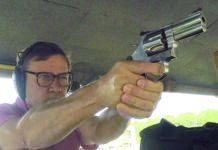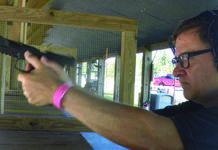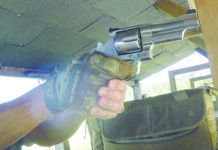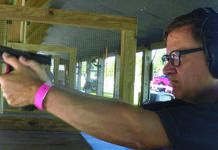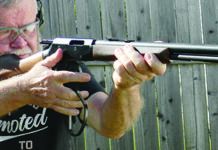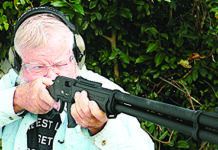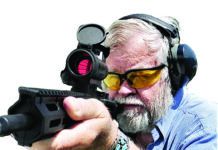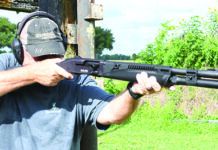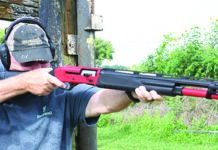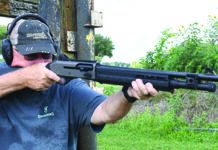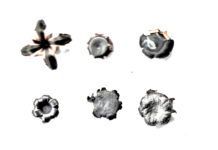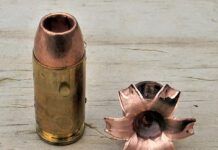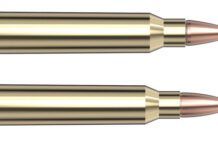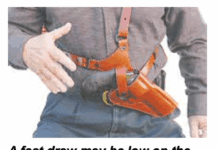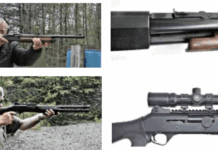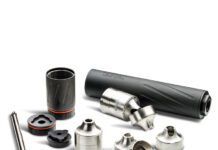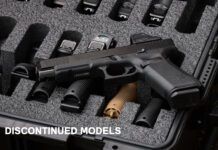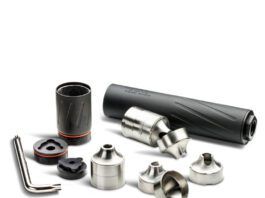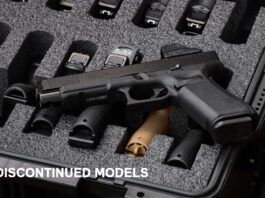SSCY Industries Announces Support for DEA Survivors Benefit Fund
SCCY, a Florida-based handgun manufacturer, will donate ten custom-made 9mm pistols in 2013 to help the U.S. Drug Enforcement Administration Survivors Benefit Fund (DEASBF).
Rock River Arms MournsLoss of Co-Founder Mark Larson
Rock River Arms President Mark Larson passed away Friday, April 5, 2013, at the age of 50. Larson, along with his brother Chuck, founded Rock River Arms in 1996 when they began producing high-quality 1911-style pistols and AR-15 style rifles. Since that time, they have earned the reputation of building some of the most sought after firearms in the industry.
Kahr Firearms Group Takes Actionto Support Gun Rights
Justin Moon, CEO of the Kahr Firearms Group, has stepped forwarded to make generous donations in support of three critically important gun-rights groups – The NRA Firearms Civil Rights Defense Fund, NRA Freedom Action Foundation and the NSSF PAC.
Bushnell RollsNew Zombie Assault Sight
The new 1X MP Zombie Assault sight from Bushnell features one power magnification and a versatile illuminated reticle that allows shooters to quickly acquire targets in shooting games, competition, or while honing their skills at the range.
Brownells 7th Annual GunsmithConference & Career FairSees Record Turnout
More than 400 attendees and 50 exhibitors filled the Des Moines, Downtown Marriott, March 27-28, for the Brownells 7th Annual Gunsmith Conference & Career Fair.
NSSF Statement on Passage of Connecticut Legislation
The National Shooting Sports Foundation, the trade association for the firearms and ammunition industry based in Newtown, Conn., issued the following statement new gun-control laws in the state:
National Junior OlympicShooting ChampionshipsContinue with Women’s Rifle
The celebration of youth competitive shooting presses on into its second week Tuesday with the start of the Women’s Air Rifle competition for the 2013 National Junior Olympic Shooting Championships (NJOSC) at the United States Olympic Training Center, April 9-12 in Colorado Springs.
Making Homemade Barrel Adapters
Take a moment before hauling that trash to the dumpster—you may find something useful, such as .22 barrels.
When is your gun not a firearm?
Collecting firearms and performing in historical or educational productions have become very popular in the last few decades. Many people have asked us about the potential criminal liability for possessing and carrying the weapons used in such activities, writes attorney T. Edwin Walker, Vice-President/Attorney, Walker, Rice & Wisdom, P.C.
Set up Your Scope for Success
Ryan Cleckner shares his process for properly setting up your rifle and scope combination so that it naturally aligns with your eye. (NSSF Video)
FNH USA Partners with Peacemaker National Training Center
FNH USA will partner with Peacemaker National Training Center (PNTC), one of the largest competitive shooting facilities in the U.S., to support enhancements to Peacemaker’s main shooting complex, Liberty Range located in Gerrardstown, West Virginia, and a separate 250-acre area used for 3-gun competition.
Smith & Wesson Flashlight Maker Picks Marketing Firm
PowerTech, Inc., worldwide licensee and manufacturer of the Smith & Wesson Flashlight line, has hired Blue August LLC to assist PowerTech with the Smith & Wesson Flashlight line's marketing direction, public relations and social media applications.


